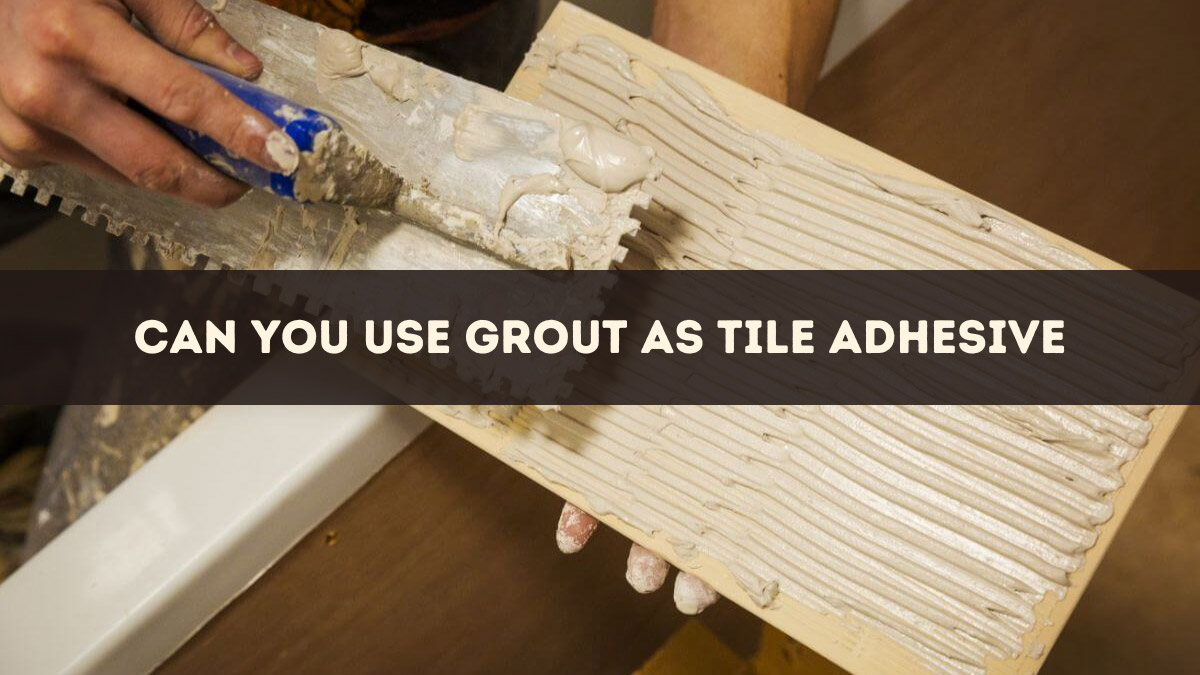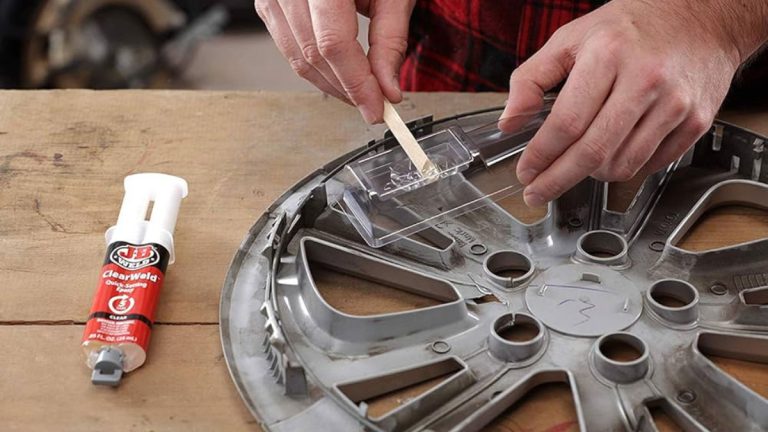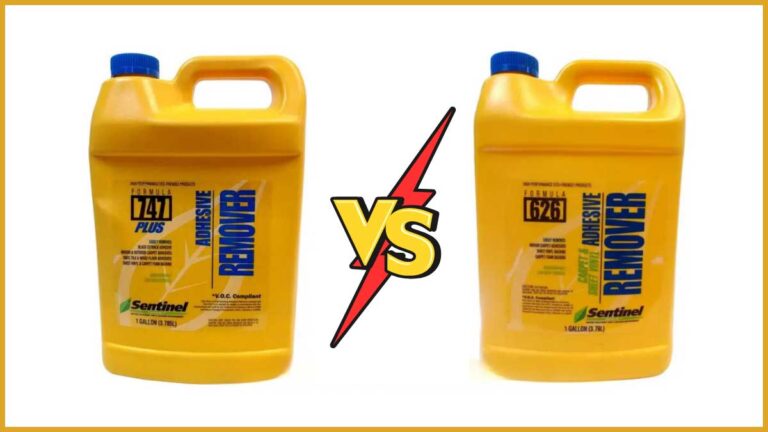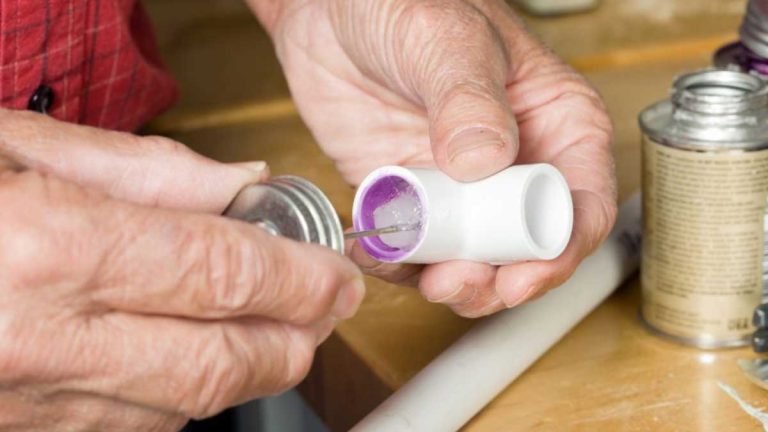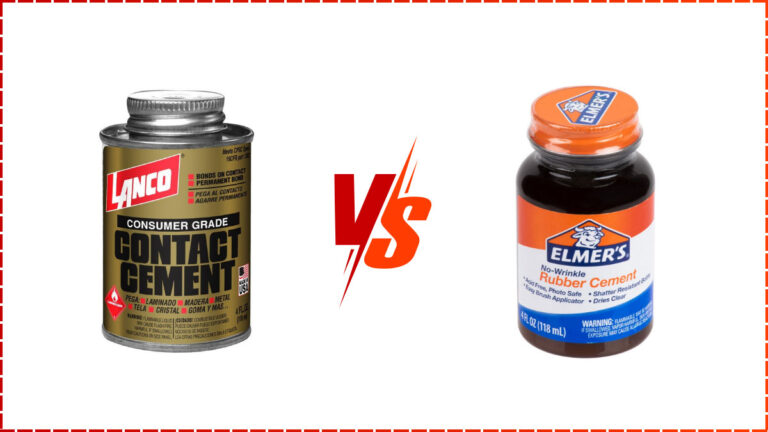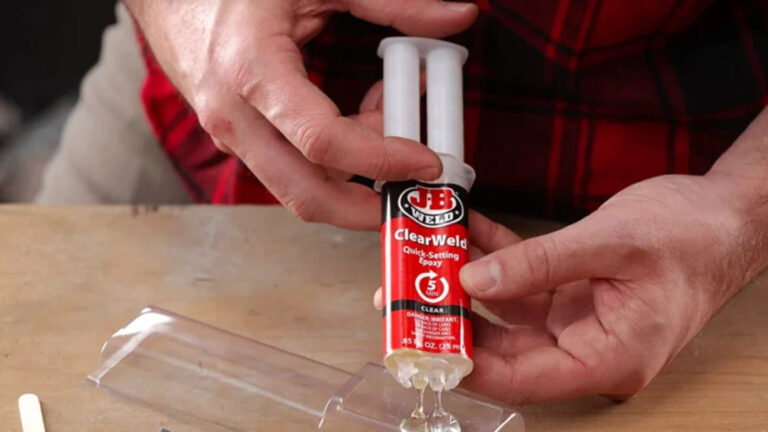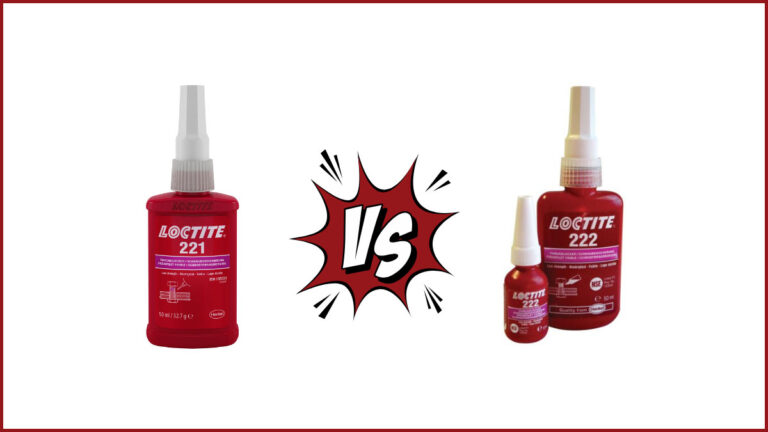Can You Use Grout as Tile Adhesive: Important Considerations
Ever found yourself mid-renovation wondering if you can use grout as tile adhesive? It’s a common question that pops up when you’re knee-deep in tile projects. Understanding the difference between grout and adhesive is crucial for the longevity and stability of your tiles.
Grout and adhesive might seem interchangeable, but they serve very different purposes. While grout fills the gaps between tiles, adhesive ensures they stick firmly to the surface. Using the wrong material can lead to tiles loosening or even falling off over time. So, can you really use grout as tile adhesive? Let’s jump into the details to find out.
Key Takeaways
- Grout and Tile Adhesive Serve Different Purposes: Grout fills gaps between tiles and reinforces the structure, while tile adhesive ensures that tiles stick firmly to the surface.
- Types of Tile Adhesives: Common types include Thinset Mortar, Tile Mastic, and Epoxy Mortar, each suited for different conditions and applications.
- Types of Grout: Grout is available in sanded, unsanded, and epoxy varieties, each designed for specific joint sizes and environments.
- Risks of Using Grout as Adhesive: Using grout instead of adhesive can lead to structural instability, reduced durability, and improper setting times, compromising the integrity of the tile installation.
- Expert Insights and Case Studies: Professionals advise against using grout as tile adhesive due to its lack of bonding strength and real-world examples show the negative outcomes of misuse.
Understanding Tile Adhesive and Grout
When tackling a tile installation project, knowing the difference between tile adhesive and grout is crucial for achieving a durable and professional finish.
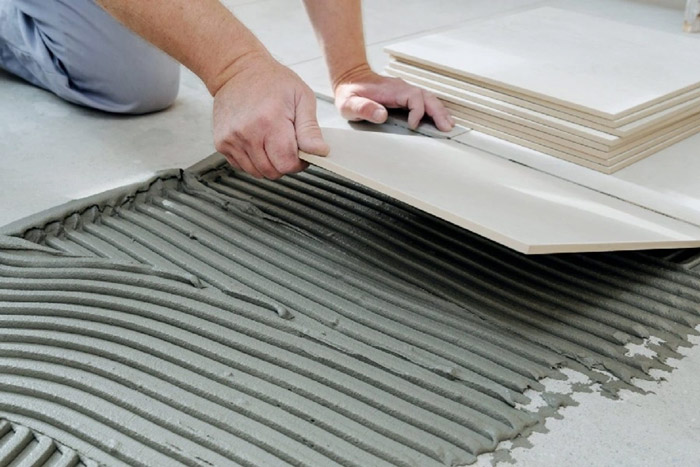
What is Tile Adhesive?
Tile adhesive, also known as mortar, is designed to bond tiles to surfaces like subfloors or walls. This material ensures tiles stay in place over time without cracking. There are three main types:
- Thinset Mortar: Cement-based, available in powdered or pre-mixed form. Ideal for wet areas like bathrooms and kitchens due to its heat and moisture resistance.
- Tile Mastic: A pre-mixed, water-based acrylic glue. Perfect for dry areas, but not for glass tiles.
- Epoxy Mortar: Resin-based and the strongest type. Waterproof and chemical-resistant, making it suitable for industrial settings.
| Type | Composition | Ideal Setting | Special Features |
|---|---|---|---|
| Thinset Mortar | Cement-based | Wet areas (bathrooms, kitchens) | Heat and moisture resistant |
| Tile Mastic | Water-based acrylic | Dry areas | Easy to use and clean up |
| Epoxy Mortar | Resin-based | Industrial settings | Waterproof, chemical- and grease-resistant |
What is Grout?
Grout is used to fill the spaces between tiles, ensuring a clean and finished look. Grouting prevents debris from accumulating between tiles and supports the tile structure. Though cement-based, grout is not adhesive and lacks the bonding strength needed to secure tiles to surfaces.
Characteristics of Grout:
- Fills gaps between tiles to create a seamless surface.
- Prevents debris from settling in tile joints.
- Reinforces tile installation by stabilizing individual tiles.
Tile adhesive and grout serve distinct purposes. You use adhesive to secure tiles to a base and grout to fill the gaps, ensuring both parts work together for a durable and cohesive installation. Mixing up their purposes can lead to unstable and poorly finished results. If ever in doubt, verify the material intended for your specific application to maintain the integrity of your tiling task.
Differences Between Grout and Tile Adhesive
Understanding the distinct roles of grout and tile adhesive is crucial for a successful tile installation project. Each product serves a unique purpose, and using them correctly ensures the durability and professional look of your tiled surfaces.
Purpose
Tile Adhesive:
Tile adhesive is designed to bond tiles to the surface on which they are installed. Acting as the “glue,” it ensures the tiles stay secure and can endure daily use. Different types of tile adhesives cater to various conditions and substrates.
Grout:
Grout fills the spaces between tiles, creating a smooth and even surface. It’s essential for preventing water and air infiltration, which protects both the structure and the tiles. Grout also gives the tiled area a finished, professional look by filling gaps and reinforcing the tile alignment.
Composition
Tile Adhesive:
Tile adhesives typically consist of a mixture of cement, water, and aggregate. Various formulas address different installation needs.
- Thinset Mortar: This cement-based adhesive usually comes in powdered form. It’s mixed with water or a latex additive before application. Suitable for most tile installations, it’s known for its strength and flexibility.
- Tile Mastic: This water-based acrylic glue is ready-mixed and suitable for dry areas. Tile mastic is easy to use and adheres quickly.
- Epoxy Mortar: A resin-based, extremely durable adhesive, ideal for industrial settings and areas requiring high strength and chemical resistance.
Grout:
Grout is made from a mixture of water, cement, and sand. The types of grout can vary based on their specific application needs.
- Cementitious Grout: Standard for most installations, it comes in sanded and unsanded varieties. Sanded grout is used for larger gaps, while unsanded is suitable for smaller joints.
- Epoxy Grout: This highly durable, stain-resistant grout is best for areas exposed to harsh conditions, like commercial kitchens.
- Furan Grout: Furan-based and highly resistant to chemicals, it’s often used in industrial settings.
Application Methods
Tile Adhesive Application:
- Surface Preparation: Ensure the surface is clean, dry, and level.
- Mixing Adhesive: Follow manufacturer instructions precisely.
- Applying Adhesive: Use a notched trowel to spread the adhesive evenly. The type of trowel depends on the tile size.
- Positioning Tiles: Place tiles into the adhesive, pressing firmly and using spacers for consistent gaps.
Grout Application:
- Tile Preparation: Tiles must be set and the adhesive cured.
- Mixing Grout: Mix according to manufacturer instructions, achieving a creamy consistency.
- Applying Grout: Use a rubber float to spread grout diagonally across tile joints. Ensure gaps are fully filled.
- Cleaning Excess Grout: After 15-30 minutes, wipe tiles with a damp sponge, removing excess grout without disturbing the joints. Use a clean, damp cloth for a final polish after joints dry.
Understanding these differences and following appropriate methods ensures a long-lasting, attractive tile installation.
Types of Tile Adhesive
Choosing the right tile adhesive is crucial for a successful tile installation. Each type serves different purposes and suits various conditions. Here’s a detailed look at the three main types of tile adhesives.
Thinset Mortar
Thinset mortar is the most commonly used tile adhesive. It’s cement-based, ensuring a strong bond.
Key Features:
- Composition: Made from cement, sand, and a water-retaining agent.
- Application: Suitable for various surfaces, including cement and concrete.
- Advantages: Offers robust adhesion and moisture resistance.
Use Cases:
- Ceramic and porcelain tiles.
- Floors, countertops, and walls.
- Both indoor and outdoor settings.
Types of Thinset Mortar:
| Type | Description | Example Usages |
|---|---|---|
| Standard | Basic, cost-effective for most installations | Common indoor areas |
| Modified | Enhanced with latex for flexibility | Areas with minor movement anticipated |
| Rapid-Set | Quick drying for faster project completion | Commercial spaces needing quick repairs |
Tile Mastic
Tile mastic is an organic adhesive known for its ease of use and quick application.
Key Features:
- Composition: Premixed adhesive, usually in a pail.
- Application: Best for vertical surfaces like walls.
- Advantages: Easy to apply and has a long working time.
Use Cases:
- Small ceramic wall tiles.
- Backsplashes and bathroom walls.
- Light-duty applications where extreme moisture is absent.
Limitations:
- Not suitable for floor tiles.
- Shouldn’t be used in areas with prolonged moisture exposure such as shower floors.
Epoxy Mortar
Epoxy mortar offers superior durability and chemical resistance, making it the strongest option among tile adhesives.
Key Features:
- Composition: Consists of epoxy resin, hardener, and powder.
- Application: Ideal for high-stress areas needing chemical resistance.
- Advantages: Resistant to stains, chemicals, and high impacts.
Use Cases:
- Industrial and commercial environments.
- High-traffic areas like hospitals and commercial kitchens.
- Outdoor spaces exposed to harsh elements.
| Type | Description | Example Usages |
|---|---|---|
| Standard Epoxy | Basic durability and chemical resistance | Residential kitchens |
| High-Performance Epoxy | Enhanced properties for extreme conditions | Laboratories and industrial settings |
Choosing the right tile adhesive ensures longevity and stability. Employ thinset mortar for most general applications, tile mastic for ease on walls, and epoxy mortar for heavy-duty environments.
Types of Grout
In any tile installation, selecting the right grout type is just as crucial as choosing the correct adhesive. Each type serves specific purposes and operates best under different conditions. This section breaks down three primary grout types to help you make informed decisions.
Sanded Grout
Sanded grout contains fine sand particles, making it ideal for filling wider joints between tiles. It’s typically used for spaces 1/8 inch or wider.
- Durability: The sand component provides extra strength, preventing cracking in wide joints.
- Application: Best for flooring projects or areas with heavy foot traffic.
- Limitations: Not recommended for polished stone tiles as the sand can scratch the surface.
Unsanded Grout
Unsanded grout lacks the sand particles found in its sanded counterpart, making it smoother and easier to apply in narrow joints. It’s suitable for spaces less than 1/8 inch wide.
- Smooth Finish: Provides a finer appearance for tighter joints.
- Application: Ideal for vertical surfaces such as shower walls and backsplashes.
- Limitations: Less durable in wider spaces, prone to cracking over time.
Epoxy Grout
Epoxy grout is a high-performance option made from resin and hardener, offering superior strength and chemical resistance. It’s suitable for various applications, including areas exposed to harsh conditions.
- Durability: Extremely resistant to stains, chemicals, and heavy traffic.
- Application: Ideal for kitchens, bathrooms, and commercial spaces.
- Maintenance: Requires minimal upkeep due to its non-porous nature.
- Cost: More expensive than cement-based grouts but offers unmatched longevity.
Using the right type of grout ensures the longevity and aesthetic appeal of your tile installation. Choose sanded grout for durability in wider joints, unsanded grout for a smooth finish in narrow spaces, and epoxy grout for high-performance and minimal maintenance needs.
Potential Risks of Using Grout as Tile Adhesive
Using grout instead of tile adhesive can lead to several issues. Understanding these risks ensures you make informed decisions about your tiling projects.
Structural Instability
Grout is designed to fill gaps between tiles, not to bond tiles to a surface. It lacks the necessary bonding strength, leading to potential problems:
- Loose or Detached Tiles: Without proper adhesion, tiles can become loose or fall off, compromising structural integrity.
- Weakened Installations: Grout’s inability to bond securely may result in entire sections of tile becoming unstable over time.
Reduced Durability
The durability of your tile installation is critical for long-term success. Using grout instead of adhesive can decrease this durability significantly:
- Stress Resistance: Grout isn’t formulated to handle the same stresses and loads as tile adhesive. This leads to a higher likelihood of damage.
- Shorter Lifespan: Tiles bonded with grout might not endure as long as those installed with proper adhesive.
Issues with Setting Time
Grout and tile adhesive have different setting times and properties:
- Improper Curing: Grout doesn’t cure in the same way as adhesive. This can result in an uneven bond.
- Inconsistent Bonding: Different setting times can lead to inconsistent tile bonding, reducing the overall effectiveness of the installation.
Key Differences Between Grout and Tile Adhesive
| Property | Grout | Tile Adhesive |
|---|---|---|
| Function | Fills gaps | Bonds tiles to surfaces |
| Bond Strength | Low | High |
| Durability | Moderate | High |
| Setting Time | Different from adhesives | Specifically formulated for tiles |
Takeaway
Understanding the appropriate use of grout and tile adhesive helps avoid structural instability, reduced durability, and setting time issues. Always use the designated materials for their intended purpose to ensure a successful and lasting tile installation.
Real-world Experiences and Expert Opinions
To understand why experts advise against using grout as tile adhesive, it’s crucial to investigate into the specific purposes and compositions of these materials. Real-world experiences and expert judgments emphasize the necessity of using each material for its intended function to ensure the stability and durability of tile installations.
Insights from Professionals
Difference in Function:
- Grout: Used to fill gaps between tiles, prevent debris accumulation, and reinforce the structure.
- Tile Adhesive (Thinset, Mastic, Epoxy Mortar): Binds tiles to subfloors or walls. Contains binding agents like polymers and resins for strong adhesion.
Professional advice consistently underscores that grout, particularly cement-based types, does not have the bonding properties required for securing tiles. For example, John Bridge, a renowned tile expert, states that grout’s main purpose is to fill spaces between tiles, not to stick tiles to surfaces. Using grout as adhesive could result in tiles that don’t stay affixed, compromising the entire installation.
Case Studies and Common Issues
Real-world applications highlight the negative outcomes of using grout as adhesive. Several case studies have reported structural issues, reduced durability, and prolonged setting time.
Case Study 1: Residential Kitchen Floor
- Issue: Homeowner used grout instead of adhesive.
- Outcome: Tiles began detaching within months. The surface became uneven, requiring reinstallation.
- Expert Review: The improper use of grout led to insufficient bonding, unable to handle floor stress.
Case Study 2: Bathroom Wall Tiles
- Issue: Contractor used sanded grout as adhesive in a moist environment.
- Outcome: Tiles fell off due to the grout’s inability to adhere properly in wet conditions.
- Expert Review: Using tile mastic provides better adhesion for vertical and wet places, unlike grout.
These examples highlight common issues:
- Structural Instability: Grout doesn’t bond as firmly as adhesives, leading to loose tiles.
- Reduced Durability: Without strong adhesion, tiles are prone to damage and dislocation.
- Inappropriate Setting Time: Grout has different curing properties, unsuitable for holding tiles in place during the drying period.
Using grout improperly risks compromising tile installations’ integrity and lifespan. Professionals recommend using materials designed for specific purposes to achieve the highest quality and durability in tile projects.
Conclusion
Understanding the distinct roles of grout and tile adhesive is crucial for any tile installation project. Using grout as an adhesive can lead to significant issues like structural instability and reduced durability. By choosing the right materials and applying them correctly, you ensure a long-lasting and aesthetically pleasing finish. Always follow professional advice and use each product for its intended purpose to avoid costly mistakes and achieve the best results for your renovation projects.
Frequently Asked Questions
Can grout be used as tile adhesive?
No, grout cannot be used as tile adhesive. Grout is designed to fill the spaces between tiles, while tile adhesive, or mortar, bonds the tiles to the surface. Using grout as adhesive can compromise tile stability and longevity.
What is the primary purpose of tile adhesive?
Tile adhesive is used to securely bond tiles to surfaces, such as floors or walls. It ensures the tiles stay in place and come in types like Thinset Mortar, Tile Mastic, and Epoxy Mortar, each suited for different environments.
What are the types of tile adhesive?
The main types of tile adhesive are Thinset Mortar, Tile Mastic, and Epoxy Mortar. Thinset is widely used for most applications, Tile Mastic is ideal for vertical surfaces, and Epoxy Mortar is best for high-stress areas.
What does grout do?
Grout fills the gaps between tiles, preventing debris accumulation and reinforcing the tile structure. It does not provide the bonding strength needed to adhere tiles to surfaces.
Why is it important to use the correct material for tile installation?
Using the correct materials, such as tile adhesive for bonding and grout for filling gaps, ensures the stability, durability, and aesthetic appeal of the tile installation. Improper use can lead to structural issues and reduced longevity.
What are the risks of using grout as tile adhesive?
Using grout as tile adhesive can lead to structural instability, reduced durability, and improper setting time. Grout lacks the bonding strength needed, causing tiles to become loose or detached over time.
What are the different types of grout?
The main types of grout are sanded grout, unsanded grout, and epoxy grout. Each type has specific applications and benefits, contributing to the overall functionality and appearance of the tile installation.
What do professionals say about using grout as adhesive?
Experts consistently advise against using grout as adhesive due to its lack of bonding properties. Using grout instead of tile adhesive often results in failed installations, highlighting the importance of using each material properly.

